Marqués de Riscal marks returns to La Place with a historic vertical tasting
By Colin HayMarqués de Riscal has celebrated the release of Tapias 2019 and marked it’s return to La Place de Bordeaux after more than a century with a historic vertical tasting from 1862.
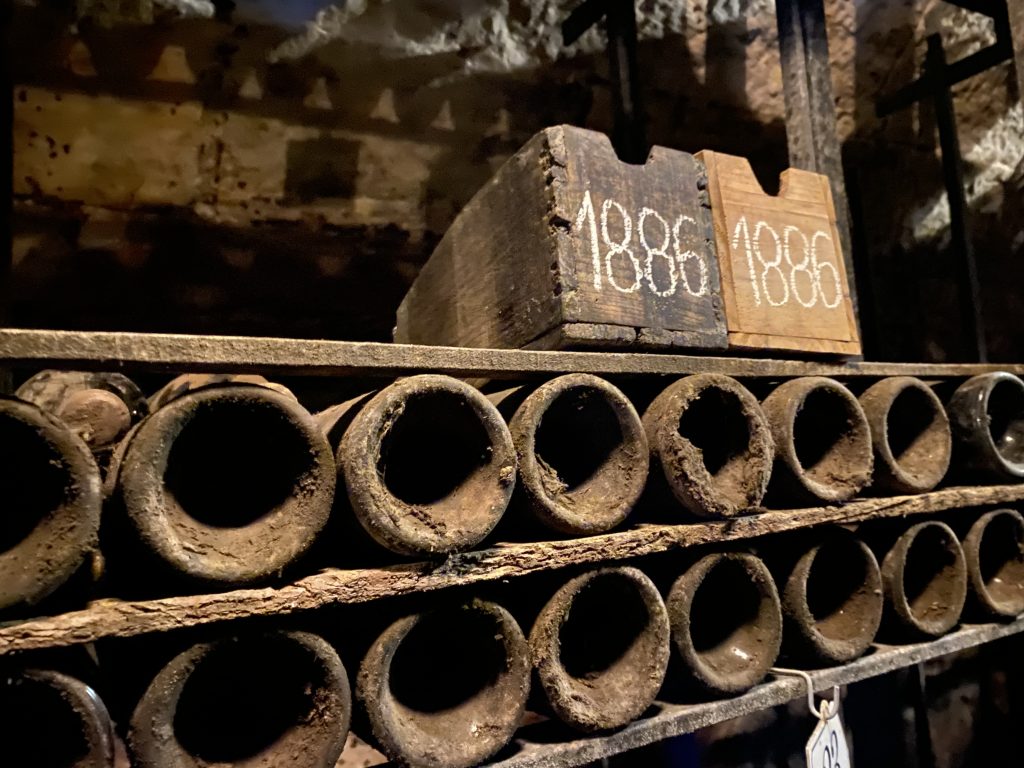
This morning, (3 October) Marqués de Riscal will launch a unique Rioja, its single vineyard Tapias 2019, which will be distributed globally through the Place de Bordeaux system. To celebrate the release the property gathered together a handful of critics and representatives of each of the négociant houses who will distribute the wine for a historic vertical tasting spanning 150 years. The tasting began with a flight of wines from the pre-phylloxéra period including the very first vintage to be produced by the property, the 1862 (selected tasting notes below).
The link between Marqués de Riscal and Bordeaux is itself a historic one. With the release on La Place of its new limited production cuvée, Tapias, the property is in fact cementing a long-standing partnership with La Place.
As Francisco Hurtado de Amézaga, general technical and production manager, puts it, “This represents for us a return to our roots. For Marqués de Riscal it was logical to think of La Place given the relationship the bodega has enjoyed with Bordeaux for over 160 years, with the passing of a series of master winemakers and through constant exchanges with consultants from Bordeaux”.
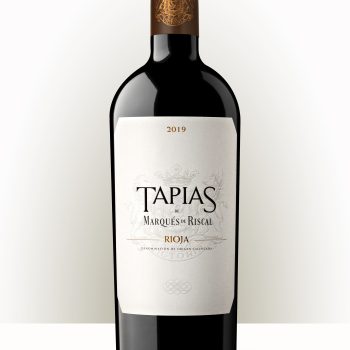
Indeed, Marqués de Riscal is probably the first hors Bordeaux release to be able to speak in terms of a genuine return to La Place. For the bodega’s wines were sold through La Place de Bordeaux more than a century ago.
And the wine itself has been constructed very much in this image. For Tapias is a wine which evokes those which the house was making in the early days, with a certain Bordeaux influence and style. That is reflected too in the winemaking methods deployed and the very identity of the wine itself.
As Francisco Hurtado de Amézaga again explained to me, Marqués de Riscal considers the distribution system of La Place to be the most appropriate for this new single-vineyard and terroir-driven wine: “Our hope is that a distribution through La Place will help best to showcase the strong identity of this wine whilst strengthening the recognition and international prestige of Tapias. Bureau des Grands Vins will join the house of Marqués de Riscal for this launch on La Place, which will call on the experience of five of the largest and most prestigious Bordeaux wine merchants: Ulysse Cazabonne, CVBG, Borie Manoux, Crus et Domaines de France and Twins”.
Finca Las Tapias, the singular vineyard from which this new wine takes its name, is one of the very best and most singular of Marqués de Riscal’s extensive vineyard holdings. It was planted in 1968 on ferrous-rich clay-limestone soils. Located in the town of Elciego, the vines were planted in the traditional way with grafts of Tempranillo from an old estate vineyard, well-known for its fine quality.
The high altitude parcel is surrounded by a rich and varied flora with abundant rock rose, lavender, rosemary, sage and wild thyme. With the vines themselves planted on natural terraces created by the flow of the river Ebro thousands of years ago, the terroir is singular and distinctive. Only very best grapes from this plot are selected to produce the Tapias cuvée.
As Luis Hurtade de Amézaga Hamparzoumian, Marqués de Riscal’s technical director, explains: “Tapias 2019 has been made for cellaring, with good backbone and a tautness in the mouth-feel and fine tannins, combining elegance and potency. On the nose there are well-defined notes of blackcurrant and cherries, with smoked and mentholated nuances. This is a very harmonious, balanced wine with enormous fruit intensity and a spicy, flavoursome finish”
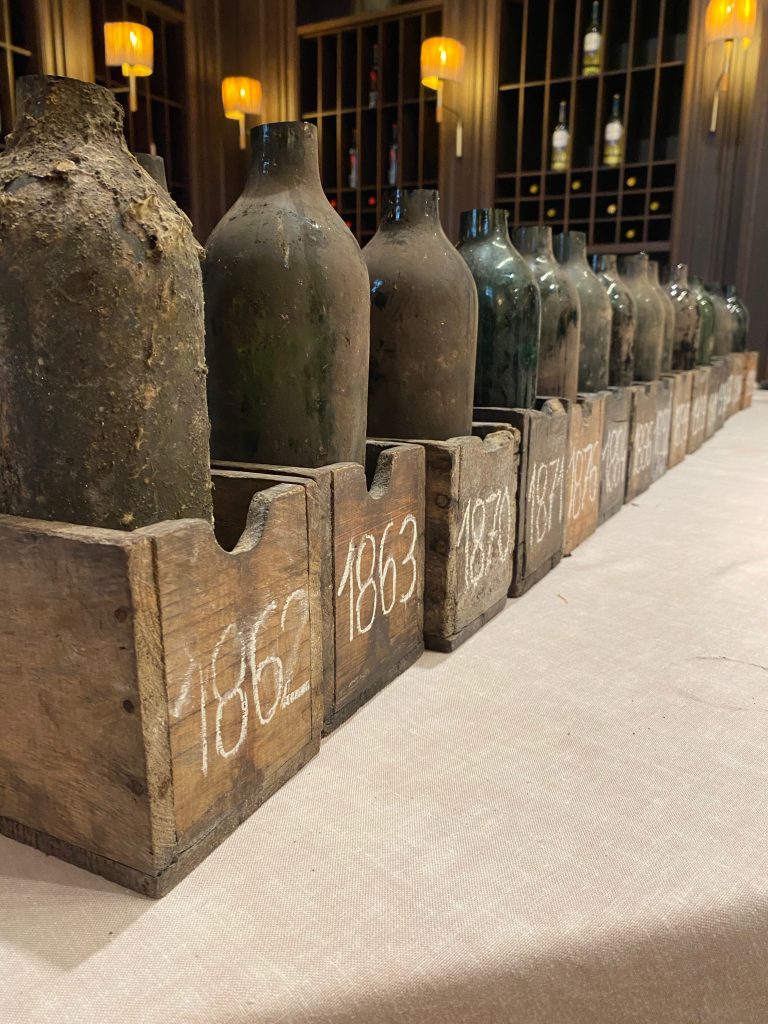
Tasting notes
- Las Tapias de Marqués de Riscal (Vinedo Singular) 2019 (tasted first in Bordeaux from bottle and then again at the property four months later from magnum on the eve of its release; 100% Tempranillo; 14.3% alcohol; from a single-vineyard site planted in 1968 on an excellent clay-rich terroir at altitude; there is a little whole-bunch fermentation; a selection of 2.85 hectares from a vineyard of around 15 hectares; 15% alcohol; around 3,000 bottles produced). Tasting this from magnum really shows the quality of the tannins, which is the key to understanding this deeply impressive wines. This is sensuous, yet serious, with a wonderfully, almost Médocain, austerity to it. Rich, deep, compact and concentrated. Aniseed, fennel seed and liquorice root accompany the dark berry and stone fruits and there is a vivid saline and ferruginous minerality. On the palate we find also chocolate and confit rose petals, with a slight gamey/animal note too. The fruit is dark (blackberry, mulberry and dried cherries) and there are gentle sweet spices too – cinnamon, nutmeg and mace – and a little crack of white pepper. Wonderfully fresh, with the lift and brightness that can only come from a terroir such as this, especially when combined with so much density and ageing potential. Pure and tightly-structured, with great purity and focus, reinforced by the grippy tannins. A true vin de garde and a true vin de terroir. 96.
- Marqués de Riscal Historical Vertical Tasting (selected highlights) Vintages tasted (those italicised are described below): Médoc Alavés: 1862, 1863; Gran Reserva: 1870, 1871, 1876, 1884, 1886, 1892, 1899, 1909, 1911, 1918, 1922, 1924, 1928, 1935, 1936, 1945, 1946, 1948, 1952, 1955, 1961, 1964; Barón de Chirel: 1995, 1996, 2001, 2004, 2010, 2011.
Pre-phylloxéra flight
- Marqués de Riscal Médoc Alavés 1862 (from the pre-phylloxéra period; Tempranillo and Graciano, with the Cabernet Sauvignon coming later; only 9.1% alcohol; pH 3.49; only 6 bottles now remain, with 2 opened for this historic tasting). Soft, gentle, with a lovely natural sweetness and a rich nutty element. Walnut notes; a hint of sherry; coconut and a gentle sweet spice – nutmeg and mace. The is also toasted brioche and even a hint of bubblegum (invented, I imagine, a century or so later!). More rich and buttery on the nose as it relaxes and breathes for the first time in over a century and a half. Very vivid with a prominent saline minerality and touch of tobacco smoke. Showing its age of course, but it is incredible that it is alive. An historic wine that would it somehow seems inappropriate to note.
Partner Content
- Marqués de Riscal Médoc Alavés 1863 (from the pre-phylloxéra period; 11.5% alcohol; pH 3.77). Not only very much alive, but fascinating and very distinctive even in this extraordinary flight of pre-phylloxéra wines. Eucalyptus and acacia, a slight lactic note almost reminiscent of aged goat’s cheese, a stony/flinty note too. There are menthol and medicinal herbal elements, a little hint of resin and a pure, bright verticality on the nose that is almost a little like smelling salts. One senses a little the elevated acidity. But this is softer, richer, fuller, and more voluptuous than the 1862 with more substance and length. There is the same natural sweetness, with hoisin and Asiatic spices. Exceptional given its age and very stable in the glass for at least an hour. 95.
- Marqués de Riscal Gran Reserva 1871 (from the pre-phylloxéra period; 11.2% alcohol; pH 3.54). In a word, extraordinary! This seems ageless and is almost young on the nose. A touch of pan-fried croutons and toast. Nutty, again – we are back to walnuts. A lovely garrigue wild herbal element, a little demerara sugar, and a musky note. Fresh and bright – vivid even. Truffles, fresh field mushrooms (champignons de Paris). This builds in the mouth. There is a slight dryness and chewiness on the finish, but that actually contributes to the impressive length here. Mouth filling, with an interesting evolution over the palate – actually a good food wine, which is an incredible thing to say about a wine of this age. 96.
- Marqués de Riscal Gran Reserva 1876 (from the pre-phylloxéra period; 11% alcohol; pH 3.50). Once again, this is remarkably young – in colour and on the nose – one could easily be a full century out here were this tasted blind. Dense. Long. Rich. Freshness and natural sweetness combined, with chocolate and balsamic notes very prominent. Pipe smoke. Hoisin too. So fresh and even tender on the palate. The best of the flight so far in terms of sheer pleasure. So dense and full and rich, gorgeously accessible. This veers a little towards the balsamic acidity through mid-palate but then resolves itself on the long and gracious finish. A little hint of coconut. Lovely structure and texture in the mouth. Something of a wonder. 97.
- Marqués de Riscal Gran Reserva 1884 (from the pre-phylloxéra period; 11% alcohol; pH 3.50). That same incredible youthness in colour and density of colour. So fresh and lifted too with great purity. This is fine and elegantly tapered. More medical herbal notes, a touch of balsam wood, acacia too. Trompette de la mort. Blackberry and dried red cherries, a little fig. One could be 100 years out again here too in a blind tasting. So fresh and intense with a bright, long and lithe finish. 97.
- Marqués de Riscal Gran Reserva 1899 (from the pre-phylloxéra period; 11.3% alcohol; pH 3.60). Limpid and glossy in the glass. You can see that this is going to be fabulous. It could almost be from the 1980s in its appearance – and on the nose too. Immediately expressive and intense – the essence of the very best crushed coffee beans – one’s head almost in the grinder – and a slight florality too. So harmonious and seamless in the transference of flavours from the aromatics to the mouth. This is very special. On the palate, this is spicy, rich and deep. There are lovely cedar and graphite notes. I love this wine – the very best yet. Broad and ultra-svelte on the attack, with a glorious amplitude and shape in the mouth. The last of the pre-phylloxéra flight and a fitting tribute to this exceptional period. Just wonderful. I didn’t spit all of this. One of those very rare wines one reacts too both emotionally and physically – goosepimples. Timeless perfection. 100.
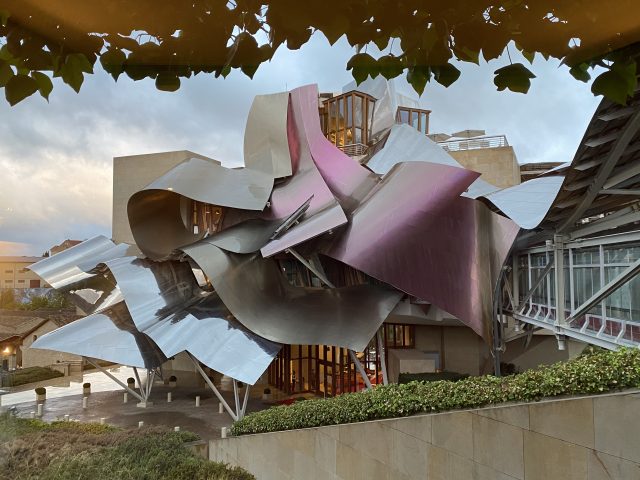
From the post-phylloxéra period
- Marqués de Riscal Gran Reserva 1918 (11% alcohol; pH 3.4). A lovely nose. Menthol notes, toasted brioche and coffee bean; maybe mocha too. Blackberry; cedar; a touch of graphite. There is a pleasing saline and ferrous minerality too. This is a little fuller and richer than the earlier post-phylloxéra wines (as the vines acquire some age). A lovely open-texture in and through the mid-palate, with the champignon and sous bois notes of the preceding wines returning towards the finish, which is just a little dry. This still lacks the density of the pre-phylloxéra wines (the vines are still young), though it has more depth and profundity than the two earlier wines (1909 and 1911). Very refined and elegant. 94.
- Marqués de Riscal Gran Reserva 1928 (just 10.1% alcohol; pH 3.14). The best of this flight so far. Roasted coffee bean, graphite, almond and macadamia nut. This is clearly fuller, richer and broader on the attack. It does not have the density of the pre-phylloxéra period, but one senses the vines gaining in age and complexity. It is also more structured, but it remains open-textured and fluid and dynamic in the mouth. Good length and a little lift on the finish, aided by the acidity (look at the pH!). 95.
- Marqués de Riscal Gran Reserva 1935 (11.9% alcohol; pH 3.35). Limpid in the glass, with a lovely sheen. It is difficult not to recall here that we are on the eve of the Spanish Civil War. What a beautiful wine, better still for me than the 1928 (or the 1936 that follows). Liquorice and confected fruits – a little angelica. Almost a hint of rum – and black tea leaves. Blackberry and blackcurrant too. A slight balsamic note too. This feels youthful, vertical and very fresh – deceptively so. There’s also a slightly gamey, bloody, animal element which I like very much. Spicy, richer, softer and with greater length and concentration than the preceding wines. Chewy on the finish, which is perhaps just a touch dry. 96.
- Marqués de Riscal Gran Reserva 1945 (11.3% alcohol; pH 3.21). A timeless monument to history and the wine of the entire tasting for pretty much the entire group. This is amazingly youthful and very, very Bordellais, but with a Tempranillo sweetness too. An utterly brilliant wine. So dark and rich and concentrated at the core. Yet refined, very elegant and archetypally austere. This is one of those wines that needs time in the glass to start to reveal its charms. Bright red berry fruit – amazingly – from the relatively high proportion of Cabernet Sauvignon (around 70%) that is contains. A little smoke; fruit pastilles too. Walnut oil too. Raspberry, loganberry, blackberry, even mulberry. Cedar and graphite. A little suggestion of heather too and a cool (almost Médocain) austerity. Amazingly textured – so deep and rich and fabulously layered and complex. A little return to the hoisin and Chinese five spice notes of the pre-phylloxéra period – with old vines once again. A gracious and beautiful wine. Velvet. 100.
- Marqués de Riscal Gran Reserva 1946 (11% alcohol; pH 3.19). A brilliant contrast to the 1945 and almost equally impressive. If we were in Bordeaux, this would be the ‘2015’ in comparison to the 1945’s ‘2016’! Another incredible wine. If anything, it is fuller, richer and certainly more immediately expressive aromatically that its immediate precedessor. We are back to the roasting coffee beans of earlier wines, with white truffle, chanterelles and dark berry and stone fruits. Figs too – reinforcing the warm vintage feeling. Enveloping, rich, incredibly deep and concentrated and very nutty. Christmas spice box, walnuts and their shells, Italian hazelnuts cake, brioche, toast and pain perdu. Almost a touch of burnt sugar caramel and candyfloss. Very different from the 1945 and much less austere. But almost equally good. 98+.
- Marqués de Riscal Gran Reserva 1948 (11.5% alcohol; pH 3.46). This is like a hypothetic blend of the 1945 and the 1946 – austere in comparison with the 1946, but open and expressive when compared to the 1945. Sweet naturally, even perhaps a little confected. Smoky. Pure. Bright and fresher than the 1946. Layered, tender, complex, a little tighter too than the and not quite as profound as the 1945. Red fruit with lots of freshness – even strawberry notes. A little more balsamic too and spicy. 96.
- Marqués de Riscal Gran Reserva 1952 (10.8% alcohol; pH 3.36) Another extraordinary wine in this exceptional tasting. This is wonderfully expressive and rather different on the nose. It is more floral. Patchouli; pot pourri; rose water; fleur d’oranger. We also find, for the first time, red peppercorns. This is also vertical, brilliantly fresh and quite aerial – incredibly aerial in fact for a wine of this age. Rich, lithe, rolling and sinuous. There are notes of green tea and wild strawberry again. There is also saffron and a pronounced fresh herbal element. Sapid on the finish, with a touch of unresolved tannin too. Refined, elegant, beautiful and unlike the others in the flight. Not as profound as the last three vintages for sure, but I love its aromaticity. 97.
- Marqués de Riscal Gran Reserva 1961 (11.6% alcohol; pH 3.5). Opulent, open and supremely expressive aromatically. This is fresh, vibrant, bright and energetic. If feels less extracted than the wines tasted either side (1955 and 1964); but is has a glorious limpidity which is, for me, the signature of its greatness. Serious and a little austere (which, again, I love). Elegant, harmonious and very complete. Balanced, layered, tender and with an enticing cool and calm restraint and slight austerity. Plenty of still grippy tannins shape and form the long, long finish. Exquisite. 99.
- Marqués de Riscal Gran Reserva 1964 (100% Tempranillo; 12.2% alcohol; pH 3.57). The final of the Gran Reserva wines tasted and, once again, we finish on a high (as we did with the 1899 in the pre-phylloxéra flight). Dried fruit and blackberry; dark dried cherry notes. This is even fuller and even richer than the 1961, but perhaps a touch less refined. Suave and soft and gloriously attractive. Darker at the core and equally glossy and limpid. This is cool and tight, with a lovely texture. At first one is struck by the incredible depth – and then comes the breadth and amplitude. Wow. A truly extraordinary wine and a bit of a Tardis in the sense that you’re not prepared for its amplitude even though the nose is so rich. Massive in its own way, but oh so refined at the same time. Another glorious wine. 98.
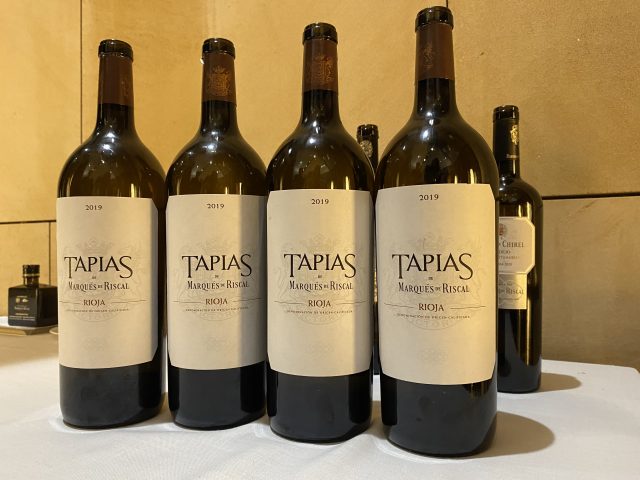
Related news
Inside Laithwaites' partnership with Channel 4
How low can you go: will en primeur price cuts tempt the market?




